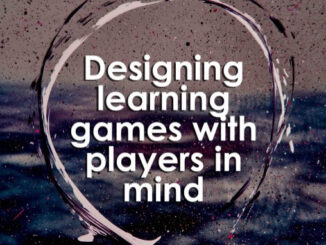
Orienteering is a classic outdoor adventure activity. It’s something that the boy scouts and girl guides did in the past (and perhaps still today).
However, it is increasingly becoming the focus of primary school trips. Exasperated parents and teachers are looking for new ways to get kids outside. And they see orienteering as a way to do it. But why?
That’s the topic of this post. We take a look at why educators all over the world are embracing the adventure sport and introducing it to more children than ever before.
It Gets Children Away From Their Screens
The average child spends several days in front of their screens every day. And while a couple of hours in the evening before they go to bed probably won’t do them any harm, fourteen hours per day probably will.
Orienteering is a challenging sport. Kids have to use maps and compasses and traverse over vast stretches of open land to reach their targets. It’s both cognitive and exercise-based.
Because of this, it has the potential to relieve them of their handheld devices for the entire day. They get to experience what it’s really like living in nature without all the modern technology to which they’ve become accustomed. Pivotally, it frees them from the constraints of city life. It gives them a taste of what nature is really about.
It Builds Teamwork
Orienteering isn’t something kids can do by themselves. They need a whole team to work together to get to the next objective.
We live in a society which needs people who have team-working skills. We need personalities that can fit certain business environments and bring people together.
Orienteering is a team sport because it involves so much negotiation and feedback. Each team member is constantly making their views heard while encouraging others to follow their plans. They must also listen to the instructions of other team members and appoint a leader, someone who will make the final decision.
It Builds Fitness
Education that’s active kills two birds with one stone. Children learn while moving around, which is beneficial for both the mind and body. Walking across muddy fields and up and down mountains is challenging, taxing all areas of the body. And doing it all day is particularly demanding, helping to build muscle tone and set children on the proper course in life
It Teaches Them How To Look After Themselves
So, while it could be argued that children can always look to their smartphones to tell them where they are, using a map and compass are valuable skills for life. And those are tools that can even be used in places where there is no signal, or when your gadget is uncharged or unavailable. Peoplae with those skills don’t have to resort to guessing or constantly asking other people for directions.
It can also help children improve their spatial and directional intelligence, something that can remain significantly underdeveloped if not built from a young age. The more they practise being in nature and finding their own way around, the more competent they can become.

Other (Playful) Ways to Enjoy the Great Outdoors
Back when Pokemon Go was taking the world by storm, one of things which was noted as a benefit of playing, was that players got lots of exercise while seeking out particular pokemon or running to cash in when they spotted that a Lure was underway. And while this may be true, the player’s attention was still mostly on a screen and on the mechanisms of a game app, rather than on the their surroundings; a fact that was borne out by a number of accidents in the early days of the game. So while they were getting exercise, maybe it wasn’t the best way to appreciate being outside or in nature.
This aside, it is much easier to imagine an app facilitating a outdoor experience, than a board game, which has always been traditionally associated with being indoors. One of the standout game successes of 2022 is just this, however – a board game which encourages you to go outside and have adventures in nature.
Nine Arches is a truly beautifully realised ‘board’ game which invites you to construct your own true life advantures using a deck of tarot-like cards (in the world of the game they have come from an ancient civilization). With it’s emphasis on being together, being outside and reconnecting with nature, this could just the start of a new trend in ‘tabletop’ games which do their best to keep you away from the table.
Nine Arches is available on Amazon
- James Bore – The Ransomeware Game - 13th February 2024
- Ipsodeckso – Risky Business - 23rd January 2024
- Review – Luma World Games - 15th December 2023





Be the first to comment